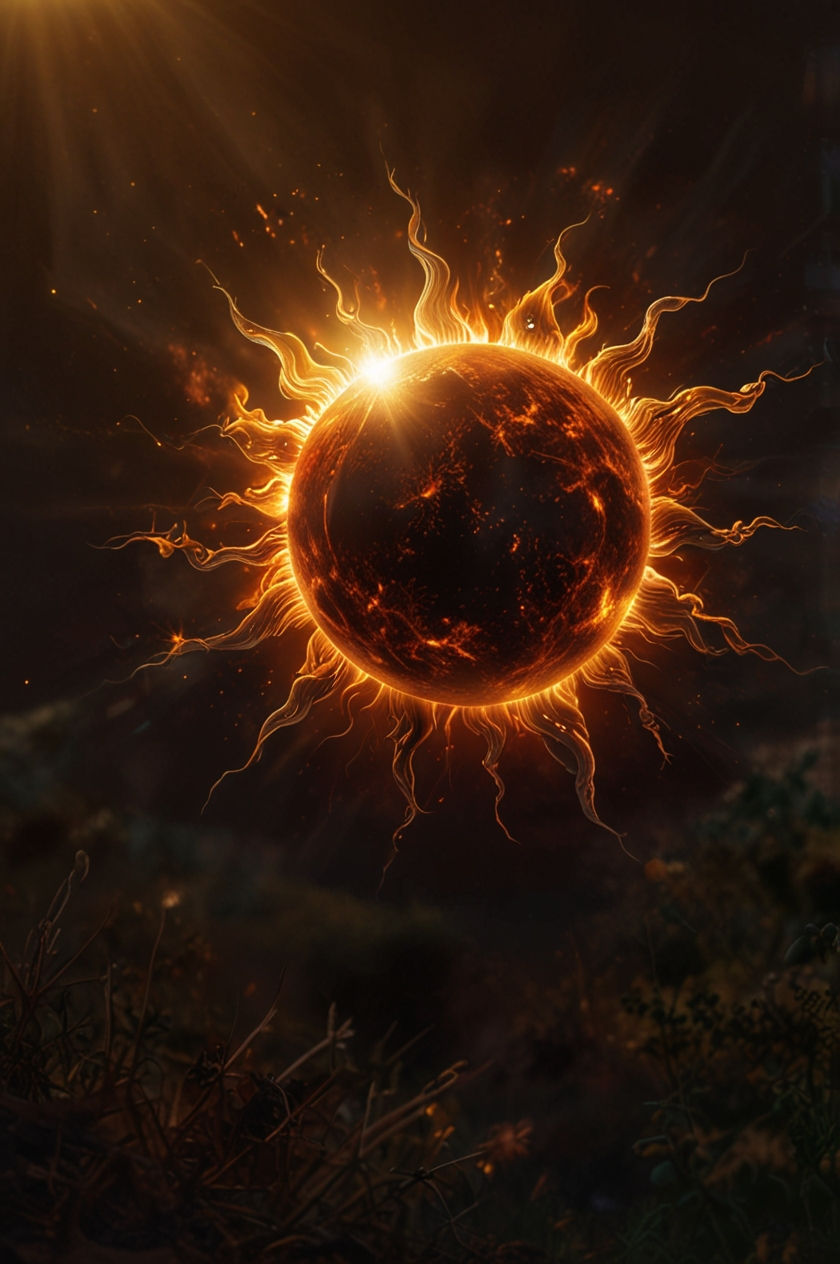Is a Hidden Planet Disrupting Our Sun and Threatening Earth?
- AI it News

- Jun 14
- 5 min read
The Silence is Deafening.

The sun is acting up. Solar flares are becoming more frequent and intense, bombarding our magnetosphere with disruptive energy. While scientists often attribute these events to the sun's natural cycles, a growing number of astrophysicists are pointing to a more unsettling possibility: a hidden planet lurking in the outer reaches of our solar system, subtly yet powerfully influencing the sun and, potentially, even Earth itself. The silence from global space agencies surrounding this theory is only amplifying the concerns and sparking a wave of speculation.
Could a celestial body, one that shouldn't even exist according to conventional models, be the root cause of our sun's erratic behavior and the subtle anomalies observed in Earth's orbit?
A Planet That Shouldn't Exist? The Evidence Mounts

The hypothetical planet, nicknamed "Planet X" by some and "Planet Nine" by others, isn't a new concept. Over the years, astronomers have observed peculiar orbital patterns amongst objects in the Kuiper Belt, the icy debris field beyond Neptune. These anomalies have long hinted at the presence of a massive, unseen gravitational force.
Now, data gleaned from infrared surveys conducted by the InfraRed Astronomical Satellite (IRAS) and the AKARI satellite are adding fuel to the fire. This data suggests the existence of an object with a mass up to 17 times that of Earth, orbiting the sun on an immensely elongated path, completing a single revolution every 10,000 to 20,000 years. This distant world, hidden in the darkness of the Kuiper Belt, could be the key to understanding the solar system's unexplained quirks.
The implications are profound. According to Dr. Elena Moravec, an independent astrophysicist formerly associated with the European Space Agency, the effects might already be manifesting:
"There are small deviations in Earth's orbital path and axial wobble that current models cannot fully explain. If this planet is real, its influence may have already begun."
This statement, while cautious, points to a disturbing possibility: the subtle gravitational tug of this unseen giant could be disrupting Earth's delicate balance.
The Sun's Unsettled State: A Gravitational Ripple Effect?

While the connection might seem far-fetched, the potential link between a distant planet and solar activity cannot be dismissed. The sun's internal dynamics are complex and sensitive. A significant gravitational influence, even from the outer edges of the solar system, could potentially perturb these dynamics, leading to increased solar flare activity and coronal mass ejections.
Think of it like dropping a pebble into a calm pond. The ripple effect extends outwards, affecting everything on the surface. Similarly, the gravitational presence of a massive planet could be subtly agitating the sun, causing it to release more energy in the form of solar storms. These storms, in turn, can disrupt satellite communications, cripple power grids, and even pose a threat to astronauts in space.
A Threat to Climate Cycles and Geological Stability?

The potential consequences extend beyond disrupted technology. Some researchers believe that Planet X could be linked to long-term changes in Earth's climate, playing a role in the cyclical patterns of Ice Ages and even influencing the frequency of mass extinction events.
The theory of "orbital resonance interference" suggests that the gravitational pull of a massive object far from the sun can subtly tug on the orbits of other planets, causing long-term variations in their axial tilt and orbital eccentricity. These variations can, in turn, affect the amount of sunlight reaching different parts of the Earth, leading to significant shifts in climate patterns.
Furthermore, some even speculate that the gravitational influence of Planet X could be contributing to increased seismic activity on Earth. While this remains a highly debated topic, the potential for a connection cannot be entirely ruled out, given the complex interplay of gravitational forces within the solar system.
The Deafening Silence and the Call for Transparency

Despite the mounting evidence and growing concerns, NASA and other global space agencies have remained largely silent on the matter. Their official stance is that "further study is needed" before confirming the existence and nature of this hypothetical planet.
However, this cautious approach has fueled speculation and mistrust. Some experts believe that governments may be deliberately withholding information to avoid widespread panic. The potential implications of a disruptive force within our solar system are undeniably significant, and the prospect of widespread anxiety and social unrest could be a factor in the perceived lack of transparency.
But is silence truly the best course of action? Shouldn't the public be informed about a potential threat to our planet, even if the information is still preliminary and uncertain? Open communication and collaborative research are crucial for understanding the true nature of this mysterious object and mitigating any potential risks.
We need to demand transparency from our space agencies. We need to encourage further research and investigation into this potentially groundbreaking discovery. The future of our planet may depend on it. The potential consequences are sobering. A rogue planet's gravitational pull could nudge Earth off its axis, triggering catastrophic events on a global scale. Imagine unprecedented shifts in climate, devastating earthquakes and tsunamis, and widespread ecological collapse. The world as we know it could be irrevocably altered.
Here are some steps we can take:
Support independent research: Funding and promoting independent scientific studies on the dynamics of the outer solar system.
Demand transparency from government agencies: Calling for greater openness and communication from NASA and other space agencies regarding their research on Planet X.
Stay informed: Educating ourselves about the latest findings and developments in astrophysics and planetary science.
Support citizen science initiatives: Participating in citizen science projects that contribute to the search for new objects in the solar system.
Engage in open discussions: Discussing the potential implications of Planet X with friends, family, and community members to raise awareness and promote critical thinking.
Ultimately, understanding the truth about this mysterious planet is a shared responsibility. By demanding transparency and supporting scientific inquiry, we can ensure that we are prepared for whatever the future holds.
FAQs
What is Planet X/Planet Nine? It is a hypothetical planet believed to be located in the outer solar system, beyond Neptune, potentially influencing the orbits of other objects.
What evidence supports its existence? Anomalies in the orbits of Kuiper Belt objects and infrared data from satellites like IRAS and AKARI suggest the presence of a massive unseen object.
Is NASA confirming the existence of Planet X? NASA has not officially confirmed its existence, stating that further study is needed.
What are the potential risks? Potential risks include disruptions to Earth's climate, increased solar activity, and geological instability.
Why are global space agencies remaining silent? Speculation suggests that governments may be withholding information to avoid widespread panic.
The possibility of a hidden planet disrupting our sun and threatening Earth is a serious matter that demands our attention. While the evidence is still emerging, the potential consequences are too significant to ignore. It's time for global space agencies to prioritize transparency, fostering open communication and collaborative research to unravel the secrets of our solar system and safeguard our planet's future.




Comments